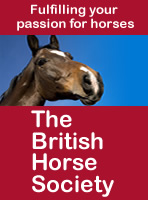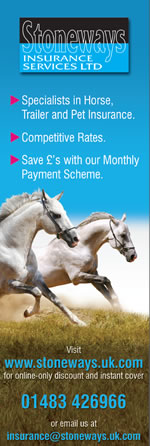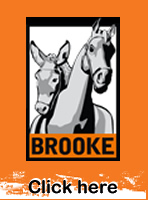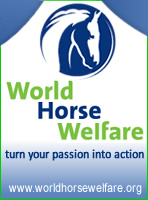
Horseytalk.net EXCLUSIVE
RIDER RIGHTS

Cattle, Dogs, Bridleway Gates and Countryside Access
AN ESSENTIAL BRIEFING
If you ride across commons, fields and open spaces you MUST read this.
Says Bob Milton
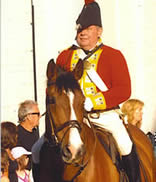 I think the discussion on Cattle Dogs and Countryside Access needs to be extended to take into account the recent spate of accidents reported to me involving not only dogs but equestrians.
I think the discussion on Cattle Dogs and Countryside Access needs to be extended to take into account the recent spate of accidents reported to me involving not only dogs but equestrians.
These have all been as a result of the introduction of grazing – cattle or ponies- onto common land and manorial waste where there are rights to ‘air and exercise’ or lawful ‘recreation’ for equestrians as well as pedestrians but there are also examples from other forms of conservation grazing such as woodland and so called wood pasture where public rights exist. These open recreational areas are invariably crossed not only by de facto and lawful access tracks but also by public rights of way – bridleways, restricted byways, byways open to all traffic and footpaths. The issues are the same as those given much recent publicity on agricultural land though on one recent occasion it was the use of a lama to protect expensive breeding cattle that was the cause of the accident to the riders and to the horses having bolted across a trunk road.
The accidents were all it seems as a result of inadequate land management and lack of experience by the land managers who turned out one or more of the examples advised against in the HSE guidance[1]. All the examples reported to me in the last two years except the lama where driven by the insistence by Natural England for cattle and pony grazing for lowland heath restoration. The accidents it seems were as a result of the grazing of a pony stallion with mares, largish groups of young heifers on two occasions and in one case a cow and calf. The cattle breeds used were all different and range from Belted Galloway and Highlands to Friesians. In one case a group of Friesian heifers caused the accident by chasing a motor bike and its rider who was using a private easement across a common where the only commoner’s rights are for sheep. The cattle were there as part of stewardship funding at the behest of Natural England.
We are seeing more applications for the fencing of common land especially in the south for heathland restoration but also on upland commons to introduce cattle and pony grazing where sheep were the main graziers for the last century. In one case at present Natural England is promoting the reintroduction of cattle grazing where there are no common rights for cattle only sheep. This raises a serious concern for those involved given the recent case law on the Animals Act 1971(c22).
The Animals Act 1971 gives a derogation on strict liability for commoners animals grazing unfenced land and town and village greens [s8(2)(a)&(b)] on a highway but not it seems from the general duty of care[2] to the public who are there by right[3] or permission[4] as in the recent cases concerning footpaths over private land being grazed [eg McKaskie v Cameron]. The effect of s12 and 13 CROW 2000 on the liability of graziers and landowners under the Animals Act 1971 needs to be clarified in the light of the guidance in HSE 17E/W.
It is also important to look at the reporting protocols. The main one it seems is where the grazing is part of a business and occurs on or at a place of work. This is the reporting of incidents to people not at work involving livestock. This duty arises out of the RIDDOR[5]. The regulations require certain accidents to be notified to the HSE
- When a person suffers a fracture, other than to fingers, thumb or toes,
- When a person has to be taken to hospital from the scene of an accident
- When a person has to be admitted to a hospital for 24 hours or longer
- When a person is killed
It is the duty of the cattle owner, land manager or the landowner to report the incidents[6]. In minor cases on public access land ie CROW then the report is made to the access authority. That is if any member of the public knows or can find out where the appropriate authority is and who the ‘responsible person’ is. It is HSE advice that this person will vary but is usually the livestock owner. In the case of incidents on public rights of way do the highway authority and rights of way departments have a publicised method of reporting and keeping records?
This strict liability and duty would also apply equally to accidents caused by dogs attacking ridden horses or the grazing stock which then results in a reportable accident to a person. In this case there would also be the need to report the accident to the police[7]. This issue has come more to the fore with the increasing use of the urban commons and other public open space by commercial dog walkers who may have as many as 20 unleashed dogs careering around out of control but applies equally to an owner with one dog. It is hoped that the DEFRA proposals to amend s2 Animals Act 1971 do not have any dire unexpected consequences or make it easier for keepers and landowners to avoid compensation.
Advice to date from the ICC is that accidents involving horses are not reportable so that unless the rider meets the criteria of going to hospital there is no method of reporting. The result being when your horse throws you off as a result of cattle or ponies and you do not go to hospital but the horse gallops through the cattle grid as it bolts home and breaks its leg, tough luck.
In the case where the rider has to go to hospital it is advised that minor detours would be permitted to return the horse to the stables to ensure the horse is safe and will not cause a hazard to anyone, to get help, or even returning home to get a change of clothes would normally be considered to be within the requirements of the regulations.
The issue of gates, especially self closing types, is of major concern to many riders. Existing statutory limitations on rights of way, as listed on the definitive map and statement, which cause accidents would not be RIDDOR reportable unless erected as part of a work activity so that the erection of gates to introduce conservation grazing would be considered a work activity. The present advice is if the rider felt that the accident was as a result of inappropriate design or construction or that the gate was faulty or damaged in some way which resulted in an accident then it would be reportable. If the rider collided with the gate as a result of poor horsemanship or the horse was spooked but not by cattle then this would not be considered as arising out of or connected with the work activity. The responsible person in the case of a reportable accident would it is advised be the person who has responsibility for the erecting and maintaining the gate. This would be equally the case with cattle grids and bypass gates on a highway which would be the Highway Authority[8]. The legality of cattle grids constructed in rights of way is still not clear.
Where the new grazing schemes require fencing within the boundary of the common or across contiguous commons then there is a dilemma. What is the liability and with whom does is reside if the animals get out onto the highway or onto the ungrazed and unfenced parts of the common and cause damage or an accident. There would be a perception with the public that because of the enclosure of the animals that there would be no risk to them or accompanying dog or horse outside of the enclosure. Such selective and internal fencing would negate the derogation[9] outside the fenced area and leave the land mangers, the land owners and the grazier open to damages as in McKaskie v Cameron, Mirvahedy v Henley, Wilson v Donaldson and Hole v Ross - Skinner.
There would also be a knock on effect of grazing with animals not covered by the registered rights in that there may be a case for a reduction in single farm payment to those commoners claiming as a result of their commoner rights as this could be seen as a voluntary reduction in those rights and legal interest in the herbage of the common.
The grazier would also not be covered for accidents inside the fencing by the derogation for any accident on the highway unless it was by way of leasing the rights or by use of the owner’s right to excess herbage which would be a difficult one to decide. Who is going to indemnify the grazier who is not a commoner? Are the landowners who are quite often local authorities, county councils or the land managers aware of the potential liabilities? Should Natural England be considered partly liable for accidents caused by its insistence of cattle grazing for conservation purposes as against normal agricultural business purposes and the design of the gates associated with stewardship funding?
Is there an added issue in the design and construction of gates in relation to the Disability Discrimination Act? All these new gates and any replacements do have to meet the requirements of the Act. Where it is felt by users that the gates through design, construction or both do not meet the legal constraints of the Act would they be lawful and so contribute to the considerations of the Health and Safety Executive when an accident occurs?
A number of unreported accidents across the south to both riders and horses have indicated that there is a basic problem in design due to the speed of closure of self closing gates. The types of self closing mechanisms used are various ranging from tractor weights to heavy gates with off set hinges. The result is closing speeds of an average of 3-4 seconds. This is insufficient to meet the requirements of safe passage of equestrians. It has resulted in damage to rider’s legs and to horses both physical and physiological such that some horses will no longer go through these equine mousetraps. That in itself is an obstruction to the highway as the gate is not sufficient for its purpose yet rider safety is not it seems a factor for highway authorities in deciding to licence under s147 HA 1980
The challenge for all the parties involved with public access is to get some joined up thinking across the whole ambit of public rights and access. At the moment it seems that each agency is working within very narrow parameters without seeing the bigger picture. It is not just access land, rights of way or vehicular highways, higher rights, the work place, environment al stewardship targets, permissive access or legal liability but safe and maximum public access to the countryside and public open space.
[1] AIS 17EW
[2] Occupiers Liability Act 1957/1984; H&S at work Act 1974
[3] S193 Law of Property Act 1925 , Common Act 1899
[4] MoD and National Trust
[5] Reporting of Injuries, Diseases and Dangerous Occurrences Regulations 1995
[6] Incident contact centre http://www.hse.gov.uk/riddor/index.htm
[7] Dangerous Dogs Act 1991 s3 – dogs dangerously out of control in a public place
[8] HA 1980 s82-90
[9] Animals Act 1971s8



